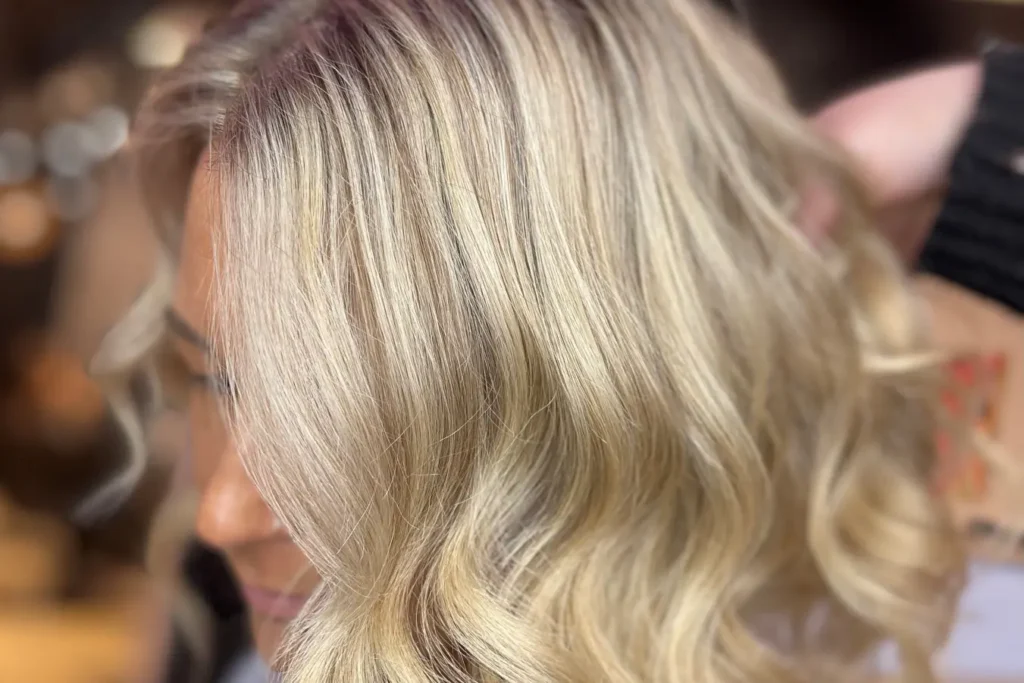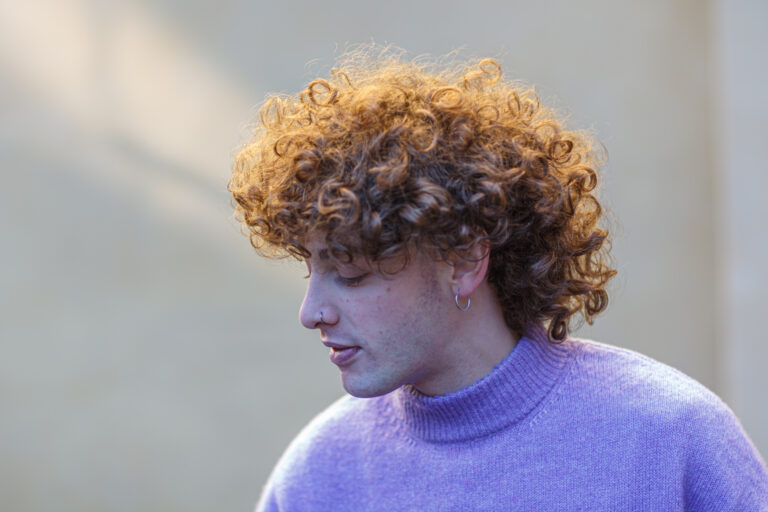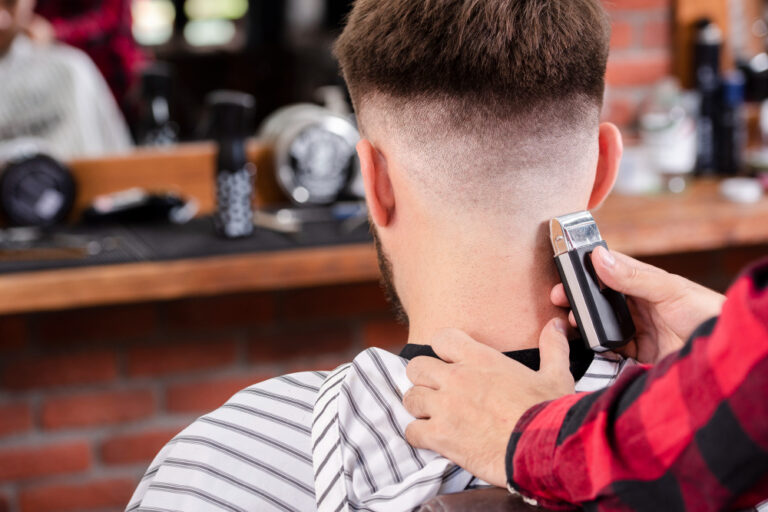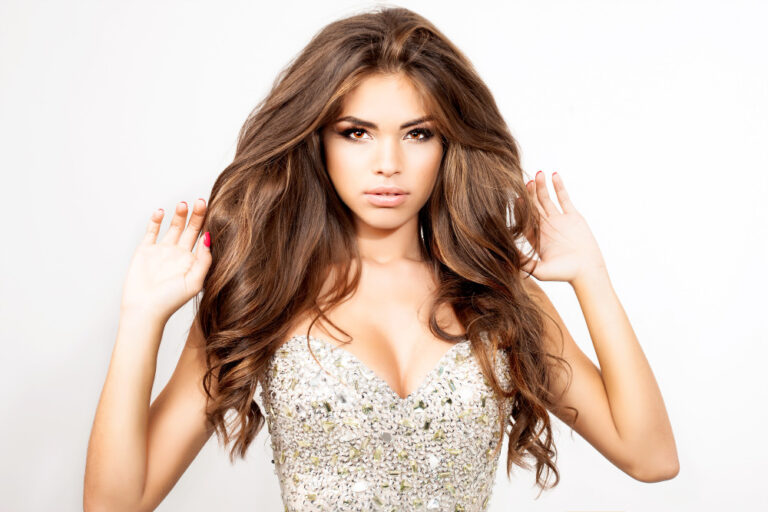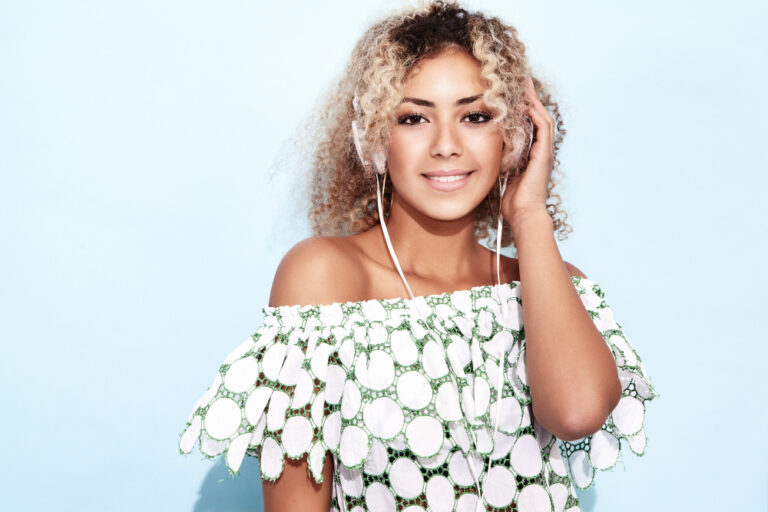Choosing the right highlights for short hair isn’t just a matter of preference; it’s an art form. The right highlight can transform your look, enhancing your features and giving your hair dimension that turns heads. On the other hand, the wrong shade can be a glaring mismatch, making your hair appear disjointed and, frankly, a bit of a mess.
The secret behind nailing perfect short hair highlights lies in understanding how various factors interplay to influence the final outcome. From your natural hair color and skin tone to the quality of the dye and the technique used, each element plays a role.
Your Skin Tone
Now this isn’t about picking your favorite shade. It’s about complimenting your unique features, and that’s where skin tone and hair texture come into play.
Skin Undertones
They come in three types:
- Cool
- Warm
- Neutral
Cool undertones have hints of blue or pink, while warm undertones lean towards peachy, golden, or yellow hues. If you’re lucky enough to have a neutral undertone, you’re a mix of both cool and warm.
When it comes to highlights, cool undertones look stunning with ash or platinum blonde, and warm undertones glow with caramel or golden hues.
How to Determine Your Skin Undertone?
It’s simpler than you might think! Look at the veins on your wrist under natural light. If they appear blue or purple, you have cool undertones. If they’re greenish, you’re in the warm undertone club. Can’t really tell? You’re probably neutral.
Another fun test is to see which jewelry suits you more. Cool tones rock silver, while warm tones glow in gold. Neutral? You’re blessed with versatility!
Hair Texture
Hair texture falls into three categories:
- Straight
- Curly
- Wavy
Straight hair tends to reflect more light, making highlights more noticeable. On the other hand, wavy and curly hair textures create depth and dimension, meaning the highlights will blend more seamlessly.
In terms of texture, fine straight hair can benefit from subtle highlights, while wavy or curly hair can handle more contrasting tones.
Choosing the Right Highlight Color
Picking the right highlight color is a fun and exciting process that allows you to express your personality and enhance your natural beauty. Here’s how to go about it.
Highlight Options for Different Hair Colors
Blondes, you’re in for a treat! The spectrum of highlight options for you ranges from icy platinum to warm honey hues. For a sun-kissed look, consider golden or champagne highlights. If you want to add some cool contrast, ash blonde or silver highlights can be a stunning choice. An adventurous option? Try pastel pink or lavender for a fun, fresh vibe.
Brunettes, your rich hair color can be enhanced beautifully with a variety of highlights. For a warm, sultry look, caramel, honey, or golden brown hues are perfect. If you want to add depth, consider chestnut or mahogany highlights. For a bold, edgy contrast, why not try blonde or auburn highlights? Or even venture into the cool end of the spectrum with icy blue or violet tones! If you want blonde highlights, avoid these mistakes.
Redheads, your fiery locks are already a statement, but highlights can amp up the drama even more. For a subtle enhancement, opt for copper or strawberry blonde. If you want to add some warm depth, consider auburn or deep red highlights. Feeling adventurous? Teal or purple can add a funky twist to your vibrant hair color.
And let’s not forget our black-haired beauties! Your dark locks can be the perfect canvas for a range of highlight colors. For a subtle, sophisticated look, try dark brown or burgundy highlights. Silver or platinum can create a striking contrast. Or, for a bold, daring look, go for bright blue or hot pink! Here’s the full brief on how to do highlights on black hair.
After rocking your new hair color, why not treat yourself with a keratin treatment in Ridgewood?
Complementing Your Natural Hair Color and Skin Tone
The key to a perfect highlight is complementing your natural hair color and skin tone. As a rule of thumb, cool skin tones pair well with cool highlight shades and warm skin tones with warm shades. If you have a neutral skin tone, you can experiment with both. Remember, the goal is to enhance your natural features, not overshadow them.
Highlight Placement and Techniques
Let’s talk about another crucial aspect of highlighting short hair – placement and techniques.
Highlighting Techniques Suitable for Short Hair
When it comes to short hair, certain highlighting techniques can really make your color pop. Balayage, a French technique where color is hand-painted onto the hair, can create a soft, natural look.
Foiling, another popular method, involves wrapping sections of hair in foil to create more pronounced, even highlights.
For a subtle, sun-kissed look, consider babylights – tiny, delicate highlights that mimic the natural hair color seen in children.
Placement Considerations for Short Haircuts
For short haircuts, face-framing highlights can brighten your face and accentuate your features. Crown highlights add depth and volume, making your hair appear fuller.
If you’re after a more edgy look, you might want to consider underlights – highlights placed underneath the top layer of hair.
A Few Factors to Consider
From upkeep to lifestyle, let’s explore what you should keep in mind to ensure your new look is not only fabulous but also feasible.
Maintenance and Upkeep of Highlights for Short Hair
Highlights, like any hair color treatment, require maintenance to keep looking their best. This can involve regular touch-ups, especially if you opt for a high-contrast color. Additionally, using color-safe shampoos and conditioners, and heat-protectant products can help maintain the vibrancy of your highlights.
Suitability for Your Lifestyle and Daily Routine
If you’re always on the go and prefer a low-maintenance look, subtle, natural-looking highlights might be the best option. If you’re into fashion and love experimenting with your look, bolder, more dramatic highlights could be a fun choice.
Budget Considerations and Pricing for Salon Highlights
The price can vary significantly depending on the technique used and the salon’s pricing structure. It’s important to discuss this with your stylist beforehand to avoid any surprises. Also, remember to factor in the cost of maintenance and hair care products.
Potential Effects of Highlights on Hair Health and Condition
Finally, consider the potential impact on your hair health. Any type of color treatment can cause some degree of damage. However, with the right care and by using high-quality products, this can be minimized. It’s always a good idea to have a thorough consultation with a professional stylist who can assess your hair’s condition and recommend the best course of action.
If you are considering Ridgewood hair salons, then make sure to visit Artists and Architects Salon. Our experts will provide you with top-notch service and most importantly professional guidance and recommendations to get the best out of your hairstyle.
Consultation with a Hairstylist
Getting a professional’s insight can make a world of difference when it comes to hair highlights. They can guide you on the best colors, techniques, and placement based on your hair type, face shape, and skin tone. They can also provide valuable advice on maintenance, potential impact on hair health, and tailor the process to suit your lifestyle and budget.
During a consultation, your stylist will assess your hair’s condition, texture, and natural color. They’ll discuss your desired look, maintenance level, and lifestyle. You’ll also talk about different color options, highlighting techniques, and the costs involved. It’s a collaborative process, and a great opportunity to voice any concerns or ask any questions you might have.
Final Thoughts
And now you have the ultimate guide to short hair highlights! From understanding your skin tone and hair texture to choosing the right color, placement, and technique, we’ve covered it all. Remember, it’s not just about following trends but also about creating a look that complements your unique features and fits your lifestyle.
Don’t forget the importance of a consultation with a professional hairstylist. Their expertise can guide you towards making the best decisions for your hair health, budget, and desired look.

